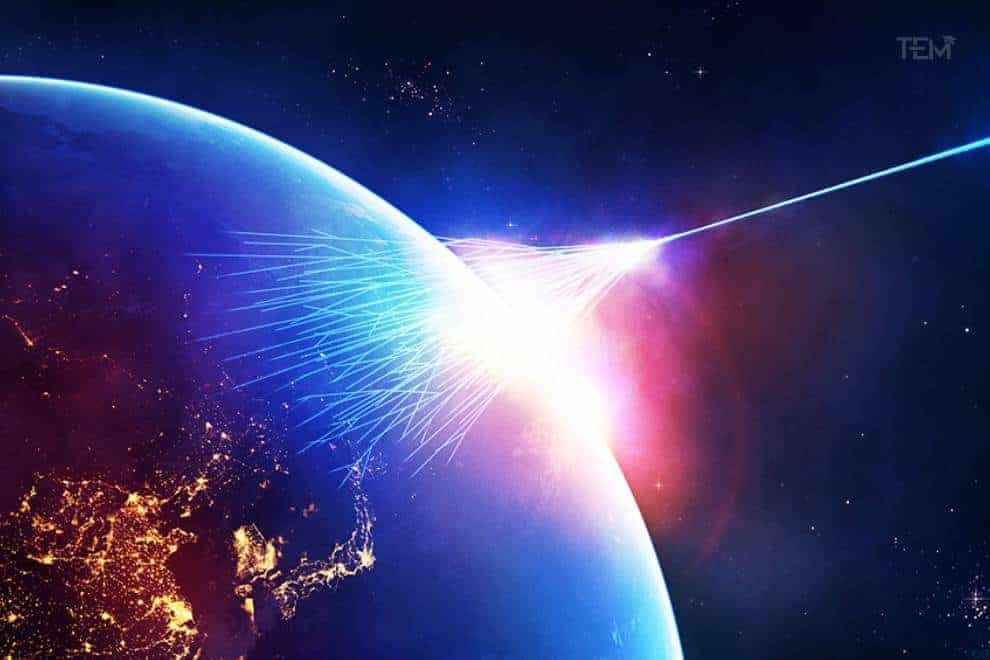Cosmic rays are an enigmatic and fascinating aspect of our universe, originating predominantly from distant astrophysical phenomena. These high-energy particles, encompassing protons, atomic nuclei, and various other subatomic entities, precipitate from stellar explosions like supernovae and active galactic nuclei. They travel across the cosmos and, upon encountering Earth’s atmosphere, become a subject of both interest and intrigue, as they have far-reaching implications for astrophysics, atmospheric science, and even biological sciences. A pivotal question arises from this discourse: how deep do cosmic rays penetrate the Earth?
To appreciate the penetration depth of cosmic rays, one must first understand their nature and composition. Cosmic rays are primarily composed of protons (approximately 85%), with helium nuclei and heavier nuclei making up the remaining fraction. Travel time across interstellar distances modifies their kinetic energy, leading to a diverse range of energies upon their arrival at Earth, often exceeding a billion electron volts (GeV). This inherent variability significantly impacts their interaction with matter as they initiate collisions with atoms, primarily in the atmosphere.
As cosmic rays encounter air molecules, they produce a cascade of secondary particles, commonly referred to as an extensive air shower. This complex process of interaction generates muons, electrons, and neutrinos, among others. While most of the original cosmic rays are absorbed or decayed in the upper atmosphere, a fraction makes its way to terrestrial surfaces. The depth of penetration into Earth is largely contingent upon the energy of the incoming cosmic ray as well as the nature of the material it encounters.
Upon reaching the surface, the capacity for cosmic rays to penetrate further depends on their composition and the geological substrate. High-energy muons, generated during the air shower process, exhibit exceptional penetrating capabilities, often traversing several hundred meters into the Earth before losing energy. In sedimentary rock or loose soil, muons can penetrate even deeper, reaching depths of approximately 1–2 kilometers in certain geological formations. However, protons and heavier nuclei lose their energy more rapidly and are less capable of deep penetration, typically traveling mere meters into the ground before encountering significant attenuation.
Considering this backdrop, it is also imperative to factor in the anisotropic nature of cosmic rays. Their penetration is not uniform across all locations on Earth. Factors such as altitude, geomagnetic latitude, and geological features contribute to the variance in cosmic ray intensity. For instance, locations at higher altitudes possess thinner atmospheric layers, leading to an increased incidence of cosmic rays. Conversely, the effects of the geomagnetic field create a barrier to low-energy particles, further complicating the understanding of cosmic rays’ terrestrial impacts.
Moreover, the implications of cosmic rays are far-reaching. Research into their penetration depth is crucial for several areas, including particle physics, astrophysics, and even space exploration. The study of cosmic rays allows scientists to investigate the fundamental properties of high-energy particles and their interactions with matter, enriching our comprehension of the universe’s structure and dynamics. This knowledge becomes especially pertinent for future explorations beyond Earth, as understanding how cosmic rays interact with spacecraft and astronauts will be critical in ensuring safety and longevity during interstellar voyages.
In addition, cosmic rays play a pivotal role in the natural processes occurring on Earth. The interaction of cosmic rays with the atmosphere leads to the formation of various isotopes, which are used in diverse fields, including paleoclimatology and archaeology. For instance, isotopes such as carbon-14 are produced in the atmosphere through cosmic ray interactions, and their decay allows scientists to date ancient organic materials. Moreover, cosmic rays may contribute to the production of cloud condensation nuclei, facilitating cloud formation and influencing weather patterns. Such interactions offer us a promising shift in perspective regarding the interconnectedness of cosmic phenomena and terrestrial life.
In conclusion, while the question of how deep cosmic rays penetrate into the Earth may seem straightforward, it unfolds into a rich tapestry of scientific intrigue and discovery. From the dense cascades of secondary particles generated in the atmosphere to the geological variations that influence penetration depth, each element contributes to a broader understanding of cosmic rays’ implications. The interplay between these high-energy particles and the ground beneath our feet not only enhances our grasp of astrobiological processes but also poses significant challenges and questions for future research. As scientists continue to delve deeper into this phenomenon, it becomes increasingly clear that cosmic rays are not merely disruptive entities, but rather silent architects of both earthly evolution and cosmic understanding.












